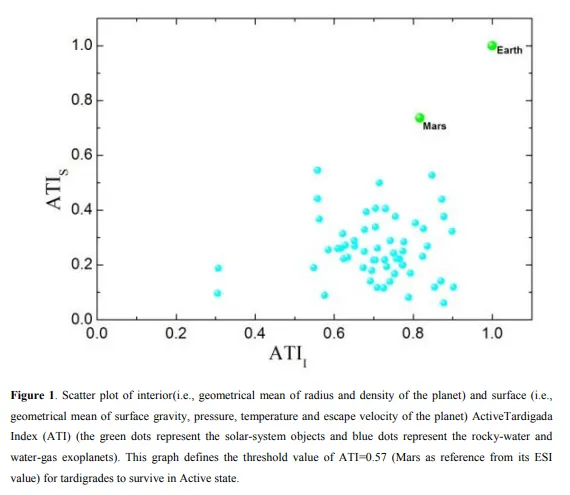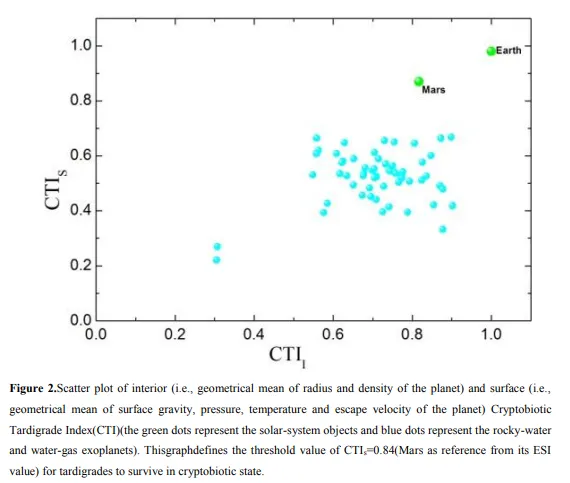Although the Tardigrades (strange tough animals) are not by profession, but rather a "scientific hobby", I like to stay in touch with the latest discoveries.
So I decided to see what's new in 2018.
And I found one paper that represents a very original way of thinking.
The authors defined two parameters: The Active Tardigrade Index
(ATI) and Cryobiotic Tardigrade Index (CTI). The value 0 = not even a Tardigrade can survive the conditions on the exoplanet, and the value 1 = Tardigrades can happily wave all 8 legs in a perfect harmony. And their cute(?) face will smile (or I simply imagine them in that way)

Short intro about the Tardigrades in space
It was 2007 when the Foton 3M took some unusual astronauts to space. Among them were tardigrade species: Richtersius coronifer, Milnesium tardigradum, Echiniscus testudo, Ramazzottius oberhaeuseri, all of them known as (almost) indestructible.

The mission took the name TARDIS (TARdigrades In Space) and two experiments were done:
- tardigrades were subjected to space vacuum
- and the combination of vacuum and solar radiation
If you want to read more about their space adventures, click right here
Could Tardigrades live on Exoplanets?
In 1995 the first exoplanet, poetically named 51 Pegasi b, was discovered.
Today, about 3500 exoplanets are known (about 1650 of them are rocky, with the size between 0.1 and 1.5 Earth radii)
Inspired by some other authors who tried to calculate the probability that some exoplanet could sustain the life, authors defined two indexes:
 and
and 
ATI - Active Tardigrade Index, x is the physical parameter of the exoplanet, such as radius (R), bulk density (ρ), escape velocity (Ve), planetary revolution (Re), surface gravity, surface pressure, and surface temperature (Ts), whereas x0 is with reference to Earth, and wx is the weight exponent
And they got this Figure. Fortunately, it CC BY 4.0, so I can adapt and share it with you. Thank you Authors and thank you arXiv


Figures are from the Reference 3, according to copyrights of this specific publisher, it's allowed
Implications:
This is very encouraging, although I'm well aware that this is more just a mental game than solid research, but just look how close are the parameters of some exoplanets in comparison to Earth and Mars.
Even more important, Tardigrades are evolving on Earth (unless... :D ) for half a billion years and they never experienced hard selection to the environment of some exoplanet. Maybe some small tweaks could make them even more durable.
Who knows, maybe we will find some extraterrestrial life during our lifetime (go astronomy and go medicine, just in case...).
The most promising exoplanets according to this study are:
Mars Kepler-100d, Kepler-48d, Kepler-289b, TRAPPIST-1 f and Kepler-106e
References:
- Blog devoted to TARDIS (TARdigrades In Space), link
- Persson, D., Halberg, K. A., Jørgensen, A., Ricci, C., Møbjerg, N., & Kristensen, R. M. (2011). Extreme stress tolerance in tardigrades: surviving space conditions in low earth orbit. Journal of Zoological Systematics and Evolutionary Research, 49(s1), 90-97. link
- Jagadeesh, M., Roszkowska, M., & Kaczmarek, L. (2018). Earth-like and Tardigrade survey of exoplanets. arXiv preprint arXiv:1802.02714. link
- If you want to explore the parameters of exoplanets
Explore, find and share with steemSTEM friends
